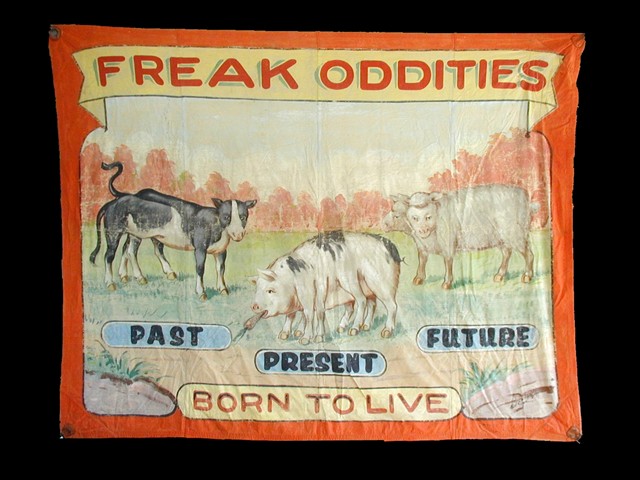
There are a lot of seriously strange neurological disorders out there. The brain is a barely understood piece of wet ware that can get all freaky and out of balance with disturbing ease. There’s the Palinopsia Disorder where the after image left in the eye after seeing bright images won’t go away sometimes for days afterwards. Or folks who suffer from Dysmimia who can only not comprehend or even realize what’s happened with hand signals. Or even the famous Stendahl Syndrome (there’s even a
movie about it) where one can experience vivid hallucinations when being exposed to good art. But the weirdest, and most disturbing neurological disorder I’ve yet encountered, has to be Cotard’s Delusion, often referred to as
“The Walking Corpse Syndrome”.

The condition was named after the French neurologist Jules Cotard who in 1880 had a middle-aged patient who believed she had ‘no brain, no nerves, no chest, no stomach, no intestines’ and was ‘nothing more than a decomposing body’. More dangerous, she thought she couldn’t die a ‘natural’ death so had no need to eat. Cases had been described in medical texts before this; 100 years earlier a woman demanded her family dress her in a shroud and put her in a coffin.
“[T]he ‘dead woman’ became agitated and began to scold her friends vigorously for their negligence in not offering her this last service; and as they hesitated even longer, she became extremely impatient, and began to press her maid with threats to dress her as a dead person. Eventually everybody thought it was necessary to dress her like a corpse and to lay her out in order to calm her down. The old lady tried to make herself look as neat as possible, rearranging tucks and pins, inspecting the seam of her shroud, and was expressing dissatisfaction with the whiteness of her linen. In the end she fell asleep, and was then undressed and put into bed.”

There have been many cases of Cotard’s Delusion since and many of come to tragic ends, dying from starvation or even extreme suicides, like pouring acid on themselves. But a new case in 2004, and the chance to study it with modern equipment, has started to reveal some answers. A man named Graham Harrison tried to commit suicide by electrocution and failed. When he became conscious, much had changed.
“When I was in hospital I kept on telling them that the tablets weren’t going to do me any good ’cause my brain was dead. I lost my sense of smell and taste. I didn’t need to eat, or speak, or do anything. I ended up spending time in the graveyard because that was the closest I could get to death.”
After being examined by a number of doctors, the case was passed to Dr Adam Zeman, a neurologist at the University of Exeter, and Dr Steven Laureys, a neurologist at University of Liège, who gave Graham a PET scan.
“Graham’s brain function resembles that of someone during anaesthesia or sleep. Seeing this pattern in someone who is awake is quite unique to my knowledge”, said Dr. Laureys. “I’ve been analysing PET scans for 15 years and I’ve never seen anyone who was on his feet, who was interacting with people, with such an abnormal scan result”.
With a patient base of one, only the most tentative of conclusions can be made about the delusion, which has been linked to bi-polar disorder and schizophrenia. A mixture of psychotherapy and drug treatment, using anti-depressants and anti-psychotics, has helped Graham, but he still finds himself sitting in graveyards: “The police would come and get me, though, and take me home”.




 There are a lot of seriously strange neurological disorders out there. The brain is a barely understood piece of wet ware that can get all freaky and out of balance with disturbing ease. There’s the Palinopsia Disorder where the after image left in the eye after seeing bright images won’t go away sometimes for days afterwards. Or folks who suffer from Dysmimia who can only not comprehend or even realize what’s happened with hand signals. Or even the famous Stendahl Syndrome (there’s even a
There are a lot of seriously strange neurological disorders out there. The brain is a barely understood piece of wet ware that can get all freaky and out of balance with disturbing ease. There’s the Palinopsia Disorder where the after image left in the eye after seeing bright images won’t go away sometimes for days afterwards. Or folks who suffer from Dysmimia who can only not comprehend or even realize what’s happened with hand signals. Or even the famous Stendahl Syndrome (there’s even a 










 I’m ready for immortality. Much to my girlfriend’s chagrin, I’ve publicly let it be known I’m willing to be put in a robot body, turned into a vampire, you know, whatever it takes. Well, except healthy eating and exercise, but I’m not a masochist, ya know? But now,
I’m ready for immortality. Much to my girlfriend’s chagrin, I’ve publicly let it be known I’m willing to be put in a robot body, turned into a vampire, you know, whatever it takes. Well, except healthy eating and exercise, but I’m not a masochist, ya know? But now, 



 You gotta ask yourself: how bad-ass do you want your Walking Dead premiere party to be? How far are you willing to go? Would you serve human flesh canapes? Then you should be arrested, but a
You gotta ask yourself: how bad-ass do you want your Walking Dead premiere party to be? How far are you willing to go? Would you serve human flesh canapes? Then you should be arrested, but a 

 Ok, so those of us searching for real-life super-human abilities have comes to terms with the unlikeliness of it. I mean, since irradiating oneself (or getting bitten by something irradiated) has disappointingly proven to only lead to fatal tumors instead of wall-crawling or smashing abilities, we must face the facts that comic books have lied to us. No super-powers for us.
Ok, so those of us searching for real-life super-human abilities have comes to terms with the unlikeliness of it. I mean, since irradiating oneself (or getting bitten by something irradiated) has disappointingly proven to only lead to fatal tumors instead of wall-crawling or smashing abilities, we must face the facts that comic books have lied to us. No super-powers for us.
